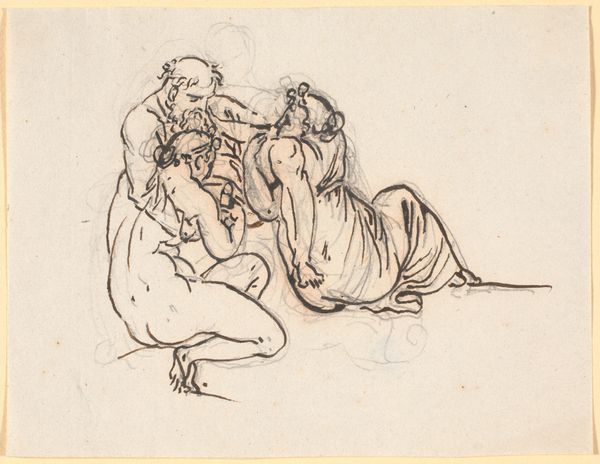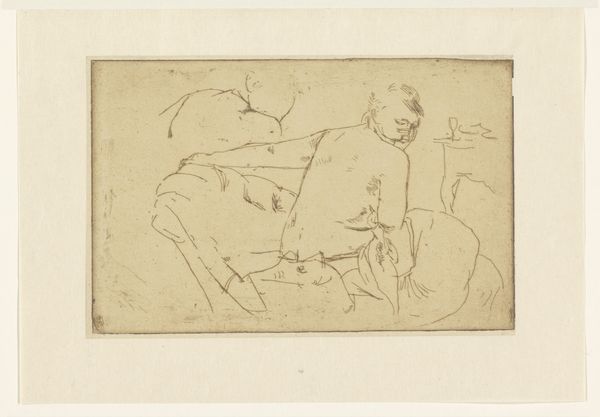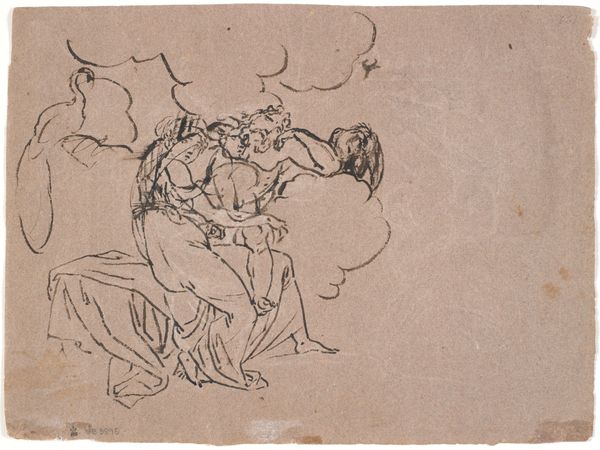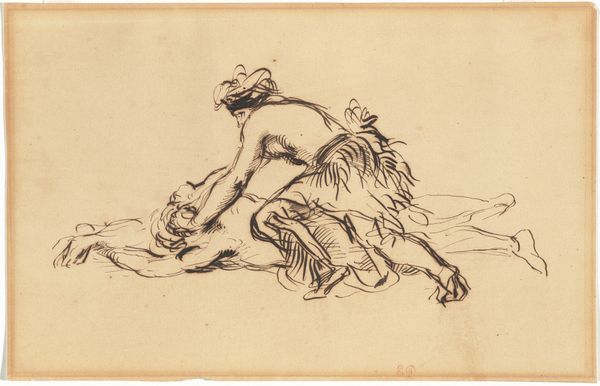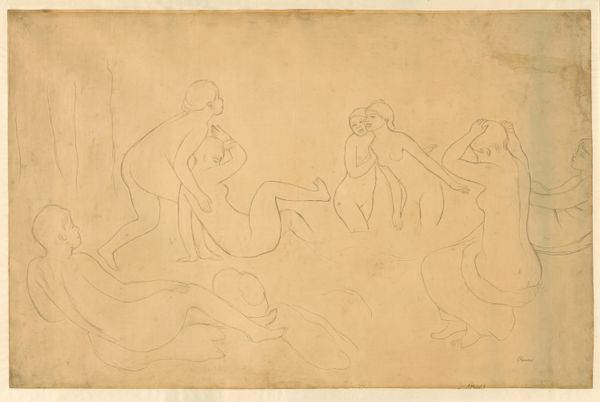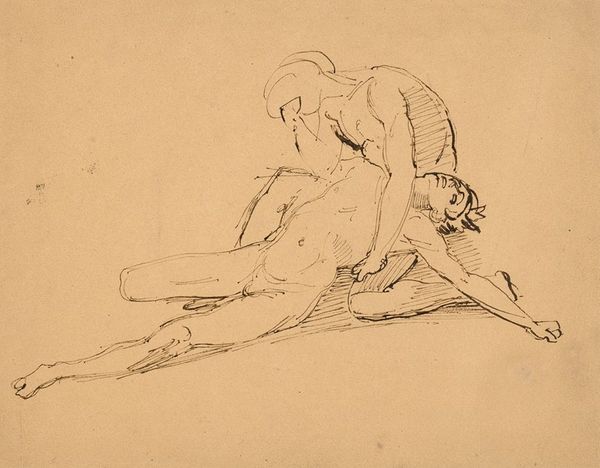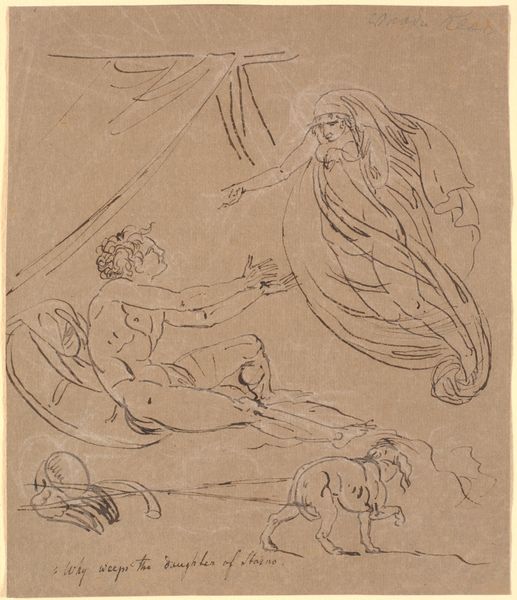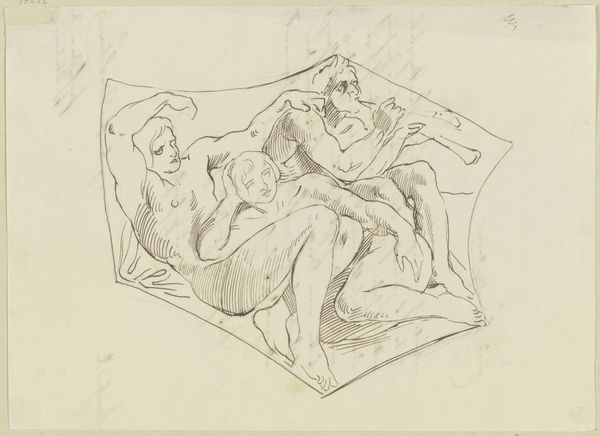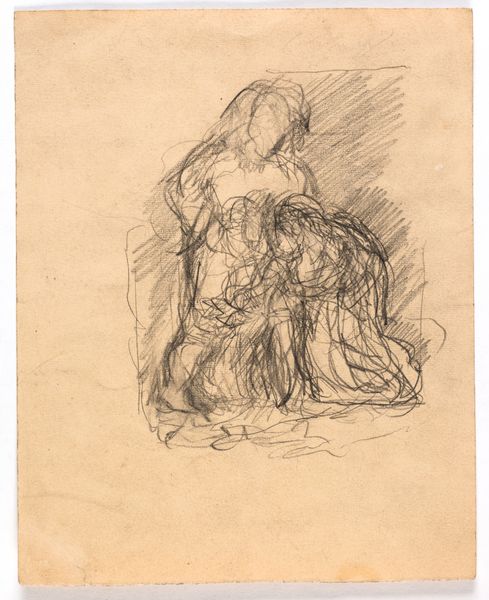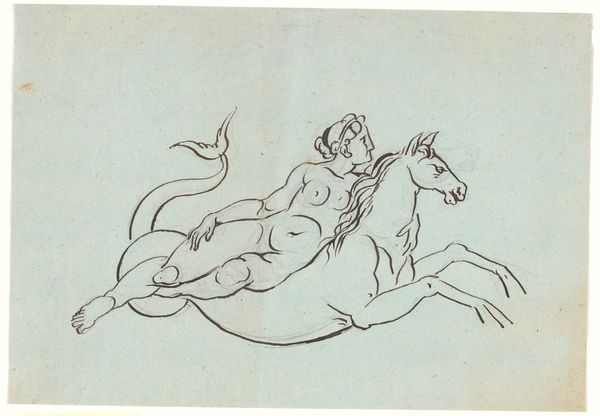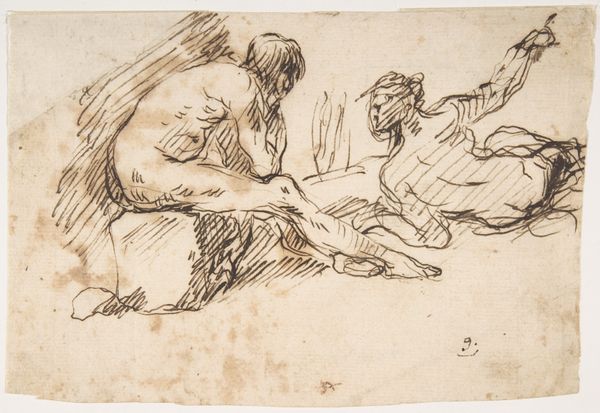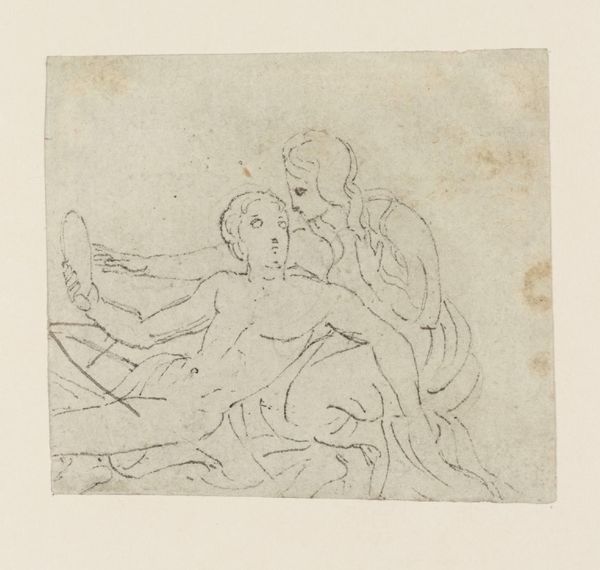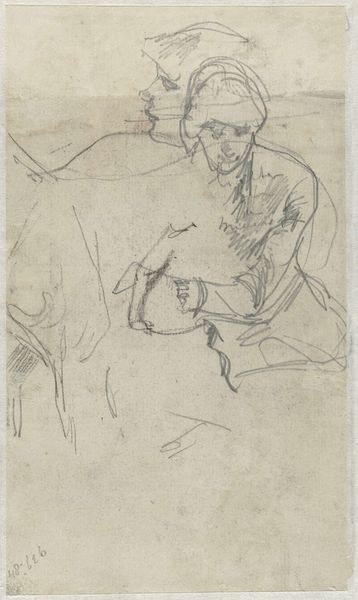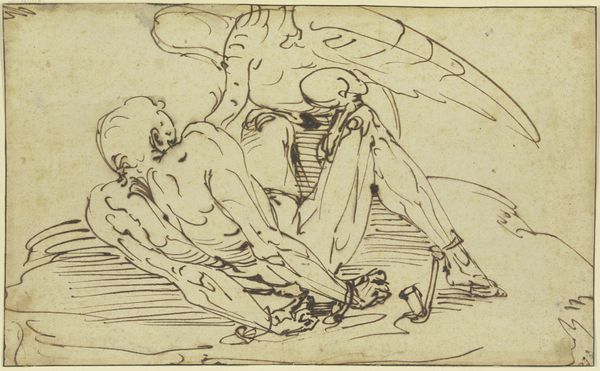
drawing
#
drawing
#
figuration
#
romanticism
#
history-painting
#
nude
Dimensions: 108 mm (height) x 204 mm (width) (bladmaal)
Editor: This drawing, "Sappho og Mytilenerinden" by Nicolai Abildgaard, was created between 1807 and 1808. It's currently housed at the SMK, the National Gallery of Denmark. Seeing the fluid lines on this tan paper, the way the figures seem to emerge rather than being sharply defined, gives me a sense of immediacy and the raw intimacy between the two women portrayed. What can you tell me about Abildgaard's approach? Curator: It's fascinating to consider the drawing’s process of making, and Abildgaard’s material choices as social statements. Look closely at this work's dependence on line; what kind of stylus do you think was used, and what does the visible, unrefined, process tell us? It looks like there’s maybe chalk and perhaps ink employed, but what labor goes into a drawing versus the highly refined painting typically shown at the time in Salons? It prompts one to challenge traditional academic hierarchies of materials, art, and craft. Editor: So you're saying the very medium challenges those hierarchies? How so? Curator: Yes, this piece directly subverts artistic conventions. By choosing to present a narrative, a grand theme of Sappho’s love, with very humble, and immediate means—materials not precious and not particularly permanent —he democratizes the subject. He shows that Sappho and the art production process itself can both be brought to the people. Can you see the possible political dimensions in the emphasis on these production methods at the dawn of the industrial age? Editor: I never considered that it could reflect emerging manufacturing processes and perhaps the dignity of a worker using simple means to create something powerful. I was just looking at the feelings of it. Curator: Exactly! And how does Abildgaard's Romantic style fit into a broader understanding of artistic labor and societal value? Is the emphasis on individual emotion at odds or aligned with a recognition of collective or mass labor? Editor: Thinking about it now, it adds a whole layer of complexity I hadn’t appreciated. I’ll definitely consider materials in a broader sense from now on. Thanks.
Comments
No comments
Be the first to comment and join the conversation on the ultimate creative platform.
